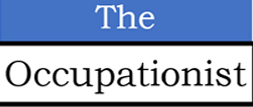Until few years back, Occupational Health (OH) essentially was one glove fits all – there were hardly any variations from the standard. But we now live in the world engulfed by the term D&I and with the advent of Gen Z at workplace in large numbers, the HR and Health professionals employed by the company are modifying their health, wellness and benefits policies.
With more newer employees in offices than in factories today the demography of workers is distinct though overlapping.
There are four generations of workers in an office today – the baby boomers, the Gen X, the Millennials and the Gen Z. These terms are social generations of the western world, now, being used globally.
For the unversed, baby boomers are those born between 1946 and 1964. Gen X are those born between 1965 and 1981, Millennials are those born between 1981 and 1996, lastly, Gen Z are those born between 1997 and 2012. Those born after 2012 are Gen Alpha.
The Gen Alpha will start entering the workforce around 2033 onwards. The Gen Alpha might pose challenges at workforce which we can’t even imagine now.
Without defining, it becomes easy to understand D & I if one reads Verna Myers famous quote, ‘Diversity is being invited to the party. Inclusion is being asked to dance.’ Verna Myers is a well-known diversity advocate.
When we talk about diversity in OH it means that health concerns of everyone (based on age, gender, physical ability, thought process etc.) have been discussed with the workforce and accounted for.
Inclusion in OH would mean that the health policies have taken into consideration their benefits and health status of all employees have been shared with them to be able to be productive and contribute safely to the organization, without harming one’s health or of the coworkers.
Gen Z, also called Zoomers, comprise around 25% of workforce and the percentage is increasing. Their expectations from workplace are different. Most are tech savvy with different levels of expertise. The recent Covid pandemic also forced the less savvy Zoomers to embrace the digital technology. As a result, they enjoy the idea of WoFA (work from anywhere).
A lot of Zoomers are financially independent and have a lot of disposable income. This makes them prone to develop habits that may be injurious to health, both in the short and long term.
Habits such as smoking (poor respiratory health, cancer etc.), taking excessive alcohol (liver failure, drink and drive issues etc.), eating unhealthy foods (metabolic disorders, obesity etc.), use of mobile phones (tech neck, eye strain etc.), working long hours with computers (eye strain, musculoskeletal disorders etc.), listening to loud music with earphones (hearing issues etc.) are some of the activities in Zoomers that have the potential to cause many health issues enlisted in brackets. In addition, lack of sleep (fatigue, low concentration etc.), lack of exercise (metabolic disorders etc.), increased consumerism (mental health etc.) all impact health.
Workplace is an apt place where the Zoomers and the Millennials could be guided to responsible living and not get into any premature health issues, sometimes irreversible or difficult/expensive to treat. Many of the diseases, both work-related and others can be easily prevented if there is awareness. If this is not done, both local and global burden of disease increases.
Guiding the Zoomers and even the Millennials in matters of health may be viewed as a wellness initiative by the senior management. In-house physician(s) in an office can devise programs to tackle the specific problems of the Zoomers and Millennials. The health checks for the Zoomers and Millennials need not be annual but should include tests and consultations based on individual risk profile.
One glove fits all approach for health checks specifically for Zoomers and Millennials and generally for all employees in the workplace do not yield expected outcomes. The health checks have to be customised for each employee depending on age, gender, work, past history, family history etc.
The guidance regarding prevention is usually provided by in-house doctors (OH physicians who are trained in preventing diseases proactively) in large offices and factories.
In smaller offices and factories, including MSMEs (Micro, Small, Medium Enterprises), services of external medical specialists should be sought. In fact, some of these smaller enterprises do hire part-time doctors to manage their work-related health concerns.
I am reminded of Jamsetji Tata who in 1877 (around 145 years ago) thought of creche, ventilation, gym, medical facilities etc in his first cotton mill, the Empress Mills at Nagpur. He also ensured separate dispensaries for men and women, surely an example of D & I. The mill also held a Health Week each year to highlight various diseases and how workers could keep themselves and their families safe.
For business leaders, when it comes to matters of health of their employees, what is required is awareness (observation), compassion and willingness to take action. This is echoed by what Jamsetji Tata said in 1895, ‘we do not claim to be more unselfish, more generous or more philanthropic than other people. But, we think, we started on sound and straightforward business principles, considering the interest of our shareholders our own, and the health and welfare of our employees the sure foundation of our prosperity.’
A workplace that cares well often fares well.
To know more, contact
_________________________________________________________________________________
Dr Ajay Sati is an Occupational Health physician who prefers to describe himself as an Occupationist, to denote, ‘an expert in diseases and other concerns of occupations’. Dr Sati has managed health and wellness programs in industries he worked, like the atomic energy, and energy (oil & gas) in India and overseas. An experienced virtual consultation expert he was involved in many greenfield and brownfield projects providing inputs from health point of view.



